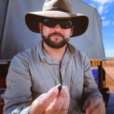Showcasing Australian science at the Australian Pavilion Osaka World Expo
ANSTO is part of a contingent showcasing Australian science at the Australian Pavilion at the World Expo Osaka in October.

Showing 701 - 720 of 1319 results
ANSTO is part of a contingent showcasing Australian science at the Australian Pavilion at the World Expo Osaka in October.

ANSTO Big Ideas encourages students to creatively communicate the work of an Australian scientist, and explain how their work has inspired them to come up with a Big Idea to make our world a better place. This competition is intended to engage and support Australian students in years 7-10 in Science and encourage them to pursue studies and careers in STEM.


Research to identify past human interactions with the environment and clarify information which may result from human impact or responses to changing environments.

Particle Induced X-ray Emission (PIXE) is a powerful and relatively simple analytical technique that can be used to identify and quantify trace elements typically ranging from aluminium to to uranium.
Understanding how COVID supresses the immune system may lead to antiviral strategies
Investigators have verified and quantified the relationship between the Earth’s land biosphere and changes in temperature and provided evidence that temperature impacts the cycling of carbon between land, ocean and the atmosphere.
ANSTO hosted an online training workshop for the FNCA (Forum for Nuclear Cooperation in Asia) project Combating Food Fraud using Nuclear Technology (CFF) in early December.
Radiocarbon dating at ANSTO’s Centre for Accelerator Science provided strong evidence that some culturally significant trees on Minjerribah (North Stradbroke Island) have persisted for up to more than 500 years
An accomplished international photographer has capture dazzling new images of one component of the main ring at our Australian Synchrotron and provided an inside view of the electron’s path when it is used.
Archive of ANSTO research publications, seminars and short talks.
Australia is leading an agriculture project in the Asia and Pacific region, in partnership with the International Atomic Energy Agency (IAEA) and the Regional Cooperative Agreement for Research, Development and Training Related to Nuclear Science and Technology for Asia and the Pacific (RCA) to progress Atoms4Food.

Rutherford backscattering primarily provides information about the concentration of elements VS depth in a light material.